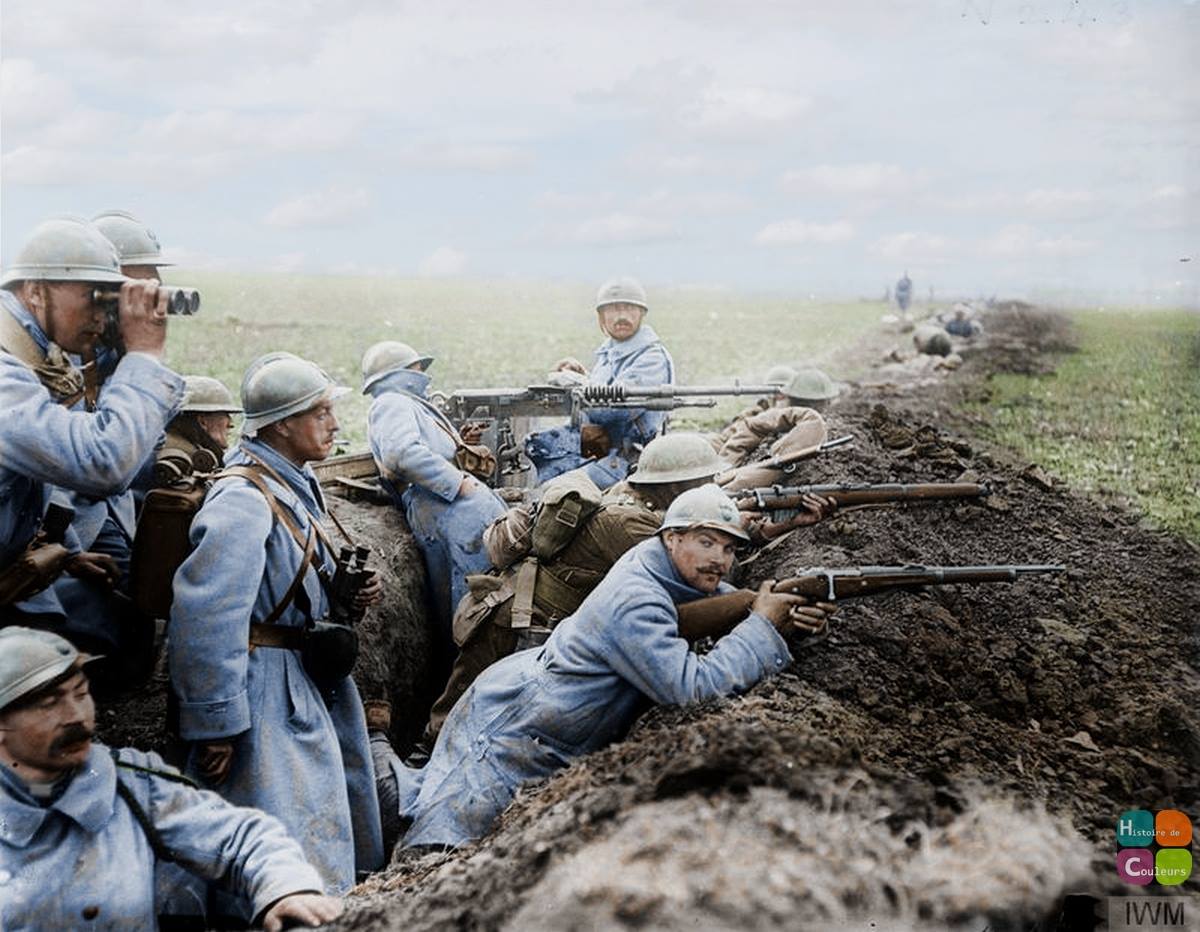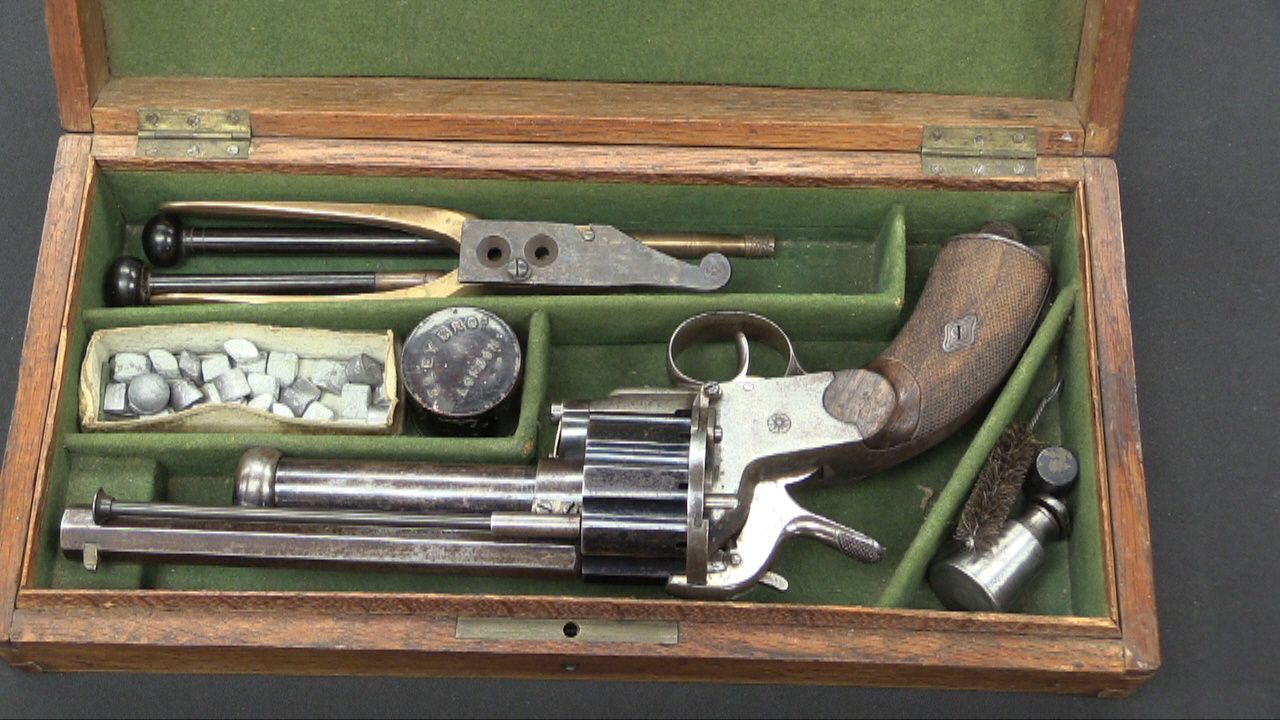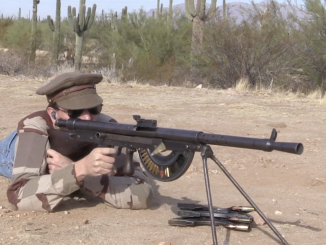Clement Pottet was one of the original fathers of the modern shotgun shell. He took the work of men like Pauly and developed a paper-walled, metallic-base shell for shotgun use. He had two main French patents on his work, the first in 1829 and a followup in 1855. The shell he designed in the 1820s remained fundamentally unchanged for more than a century, until plastic replaced paper for the shell body.
Today we are looking at one of Pottet’s original shotguns, designed for his ammunition. It is a double barrel side-by-side type, with a unique rotary action to open and close.
Thanks to the Liege Arms Museum for access to film this for you! If you are in Belgium, definitely plan to stop into the museum, part of the Grand Curtius. They have a very good selection of interesting and unusual arms on display.




We have marvelous mechanics on display here. However, what interests me most, part of inventiveness of designers, is high level of manufacturing technology in such early times. Fit and finish seem to be very nice.
One obvious question which these designs generate is why there was not similar early development in ball cartridges.
“(…)there was not similar early development in ball cartridges.”
Well, whilst “(…)patents on his work, the first in 1829(…)”, pin-fire cartridge was invented in 1823 according to https://bertock.home.xs4all.nl/page26/page29/index.html which was was the first mass produced full metal cartridge
I would like very much to get facts about the developement of and use of the machine shotgun. I know that this gruesome weapon was used by american soldiers in the spanish-american war, and also that it was totally banned after WW1 by the whole world. I have also once seen two of these Gatling machine shotguns on display in The Norwegian Navy Museum in Horten, Norway. Together with the two weapons there were also ammunitions and gruesome pictures of victims, all with a bucket on the floor for those who needed to throw up… But THE HISTORY of this weapon seem now VERY close to being lost… CAN ANYONE HELP???
“(…)Gatling machine shotguns(…)”
This might be 1-inch-caliber Gatling as according to http://dracobooks.com/Gatling-Guns-Service-and-Description-1878.html
For the 1-inch-caliber gun, in addition to the cartridge containing a single solid projectile, a canister-cartridge has been used, containing 15 lead balls, each weighing 141 grains, terminating in front with a one-inch half-round projectile, weighing 1,287 grains.
The total weight of this 1-inch canister-cartridge is 5,190 grains.
Though I do not know if it was actually used by american soldiers in the spanish-american war or totally banned after WW1
As for ammunition itself, photo is available there: http://old.municion.org/Gatling/1inchBuckBall.htm
Nobody forbade shrapnel shots.
Explosive shells with a weight of less than 0.4kg fell under the ban.
Shrapnel has been widely used since its inception until now. Just to save lead, they began to make it from cast iron or cheap grades of steel.
The change in tactics and the progress of explosive shells significantly reduced its importance, but could not completely replace it.
Shrapnel proved to be indispensable in the jungle of Indochina. Both Vietnam and Guadalcanal (especially). When the Marines landed practically “with what was in their pockets”, not having time to unload the bulk of the supplies. Fortunately, they managed to unload the 37mm AT guns, and they had shrapnel cartridges in the kit.
Someone says that it was these guns that prevented the situation from developing from “weightless” to “catastrophe”.
The future is always here, it’s just not evenly distributed. (cf. William Gibson)
Wow I have lived in France since 1972 and have never seen this gun before not even in Cibles what a great find
Plastic body shotgun shells appeared around 1960. As late as 2019 you could still buy new manufacture paper shells. Apparently competition shooters often prefer paper shells over plastic.
Yes and some land owners forbid the use of plastic shells and plastic wads on their land. One of the reasons fibre wads are still available in some shotshells.
I can totally agree with those land owners when I see how much used plastic shells can be found when I walk in the countryside.
Federal still makes them today–costs at least 50% more than plastic, but there is a market.
For whatever reason, some people had problems with chamber rust when switching to plastic hulls. Maybe no one bothered to oil chambers when paper shells would leave wax behind?
In old outdoor books they would have a hint to slice down a spent paper hull shotgun shell a a few times, then burn it as a hand warmer or as a fire starter.
Well who developed the brass shotgun shell, in 12 gauge?
It will probably be easier to answer the question “who invented the 12 gauge.” 😉
What can be called “metal shotgun shell” existed long before the advent of primers.
I think we should look for references to the approval of the pound hunting caliber system.
https://www.weaponscollector.com/h_delaney_c1720.php
And this is far from an early example.
The earliest still had match locks.
https://www.zamek-opocno.cz/pamatky/opocno/fotogalerie/sbirky%20zbrani/_04b%20michael%20-%20kopie.jpg
https://www.zamek-opocno.cz/en/events/41361-castle-opocno-armory-extended-seeing
https://www.youtube.com/watch?v=udLXSdgEL88
https://collections.royalarmouries.org/object/rac-object-264.html
England: Let’s make a double-barreled shotgun with barrels side-by-side and reveal America: how about an inverted shotgun that breaks? France: how about a side-opening gun? England and America: why are you so